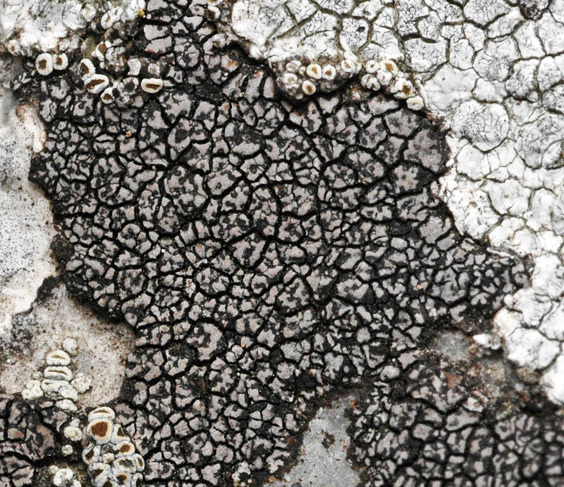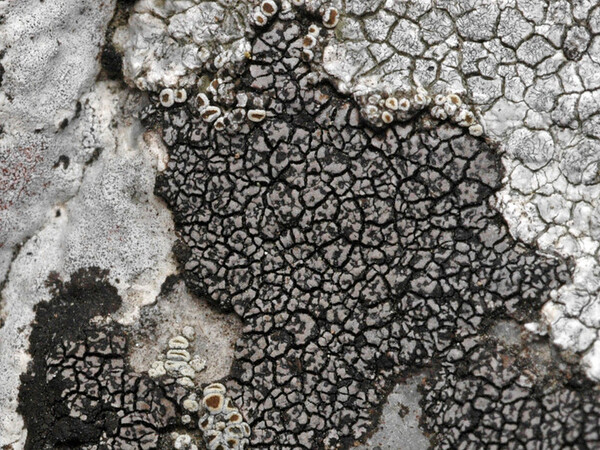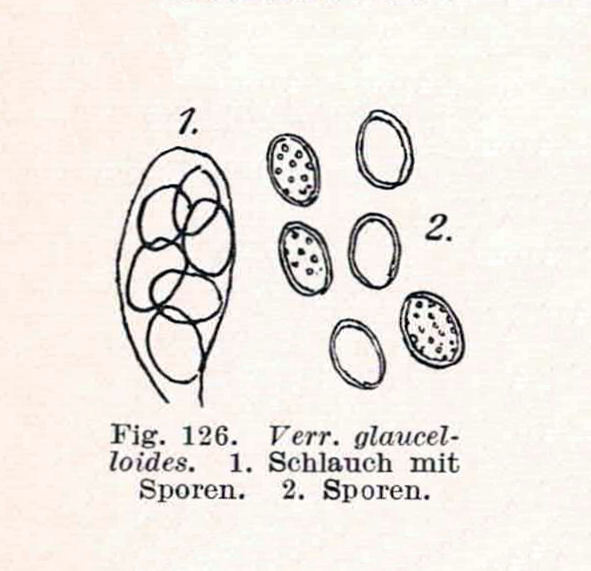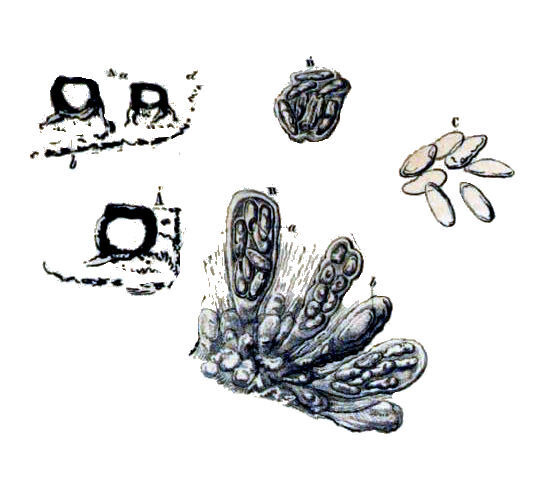Placopyrenium fuscellum (Turner) Gueidan & Cl. Roux
in Navarro-Rosinés & al., Bull. Soc. Linn. Prov., 58: 174, 2007. Basionym: Lichen fuscellus Turner - Trans. Linn. Soc. London, 7: 90, 1804.
Synonyms: Lithocia fuscella (Turner) A. Massal.; Verrucaria fuscella (Turner) Winch; Verrucaria fuscella var. crassa Garov.; Verrucaria fuscella var. subviridula Garov.; Verrucaria glaucelloides Hepp; Verrucaria glaucina sensu Zetterst. et auct. p.p non Ach.; Verrucaria glaucina var. caeruleoalba B. de Lesd.; Verrucaria glaucina var. furva Hue; Verrucaria glaucina var. griseoatra (Kremp.) J. Steiner; Verrucaria glebulosa Nyl.; Verrucaria griseoatra (Kremp.) Servít; Verrucula fuscella (Turner) J. Steiner
Distribution: N - VG, Frl (TSB 2206), Ven (Breuss 2009), TAA, Lomb, Piem (Isocrono & al. 2004), VA (Piervittori & Isocrono 1999), Emil (Breuss 2009, Fariselli & al. 2020), Lig (Giordani & al. 2016). C - Tosc (Breuss 2009), Paoli & al. 2014b), Marc (Nimis & Tretiach 1999), Umb (Ravera & al. 2004, 2006b, Genovesi 2011), Laz (Pietrini & al. 2008, Genovesi & al. 2011), Abr (Nimis & Tretiach 1999, Gheza & al. 2021), Mol (Garofalo & al. 1999, Nimis & Tretiach 1999), Sar (Rizzi & al. 2011, Giordani & al. 2013). S - Camp (Garofalo & al. 1999, Aprile & al. 2003b, Nimis & Tretiach 2004), Pugl (Garofalo & al. 1999, Nimis & Tretiach 1999), Cal, Si (Grillo 1998, Grillo & Caniglia 2004, Caniglia & Grillo 2005, 2006).
Description: Thallus crustose, episubstratic, well developed, areolate, 0.25-0.8 mm thick, often forming small, up to c. 1 cm wide patches, but individual thalli often coalescing to cover larger surfaces, the areoles angular to elongated at margins, 0.3-1.4 x 0.7-1.8 mm, often divided into smaller units by dark lines, the thallus becoming cracked into 0.6-2 mm wide, mature areoles; upper surface pale grey, usually pruinose, the margins and the sides dark brown to black. Cortex poorly defined, paraplectenchymatous, the cell walls with a brown pigment, overlain by an up to 6 μm thick epinecral layer; medulla densely pigmented. Perithecia black, laminal, 1-10(-30) per areole, immersed, 0.19-0.25 mm across, the apex 0.06-0.1 mm diam., flat to slightly convex. Involucrellum absent; exciple colourless to pale brown in lower part, brown in upper part, the pigmented parts K+ darker brown or greenish brown; hamathecium of periphyses and periphysoids, interascal filaments absent; hymenial gel hemiamyloid, I+ red (I+ blue at very low concentrations of I), K/I+ blue. Asci 8-spored, clavate, I-, fissitunicate, the wall thickened above with an indistinct ocular chamber, Verrucaria-type, 40-50 x 14-17 µm. Ascospores 1-celled, hyaline, oblong-ellipsoid, (11.5-)13-17(-20.5) x 4.5-6(-7.5) μm. Pycnidia very rare, laminal, multilocular, Dermatocarpon-type. Conidia simple, hyaline, bacilliform, 3-5 x c. 1.2 μm. Photobiont chlorococcoid. Spot tests: cortex and medulla K-, C-, KC-, P-, UV-. Chemistry: without lichen substances.Note: on steeply inclined calciferous rocks (mainly limestone and dolomite), often on Verrucaria nigrescens; a polymorphic taxon in need of revision. For further details see Nimis (1993: 739) and Orange (2013b).
Growth form: Crustose
Substrata: rocks
Photobiont: green algae other than Trentepohlia
Reproductive strategy: mainly sexual
paras on Bagliettoa and Verrucaria when young
Poorly known taxon in need of further study
Commonnes-rarity: (info)
Alpine belt: rare
Subalpine belt: rather common
Oromediterranean belt: rather rare
Montane belt: common
Submediterranean belt: very common
Padanian area: very rare
Humid submediterranean belt: very common
Humid mediterranean belt: rather common
Dry mediterranean belt: rather rare
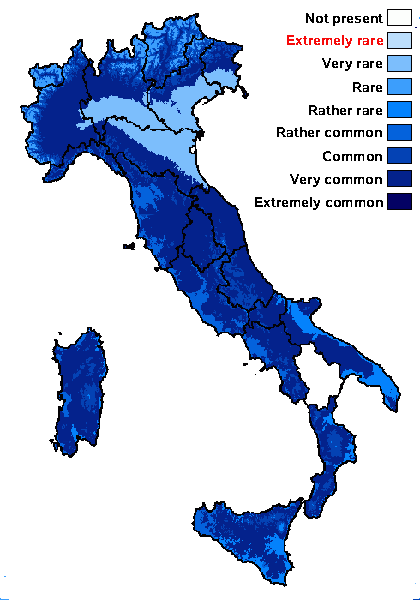
Predictive model
Herbarium samples
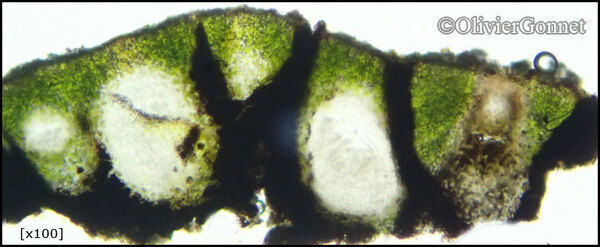
Courtesy Danièle et Olivier Gonnet - Source: https://www.afl-lichenologie.fr/Photos_AFL/Photos_AFL_P/Text_P_3/Placopyrenium_fuscellum.htm
France, session AFL 2015 dans le Lot

Courtesy Danièle et Olivier Gonnet - Source: https://www.afl-lichenologie.fr/Photos_AFL/Photos_AFL_P/Text_P_3/Placopyrenium_fuscellum.htm
France, session AFL 2015 dans le Lot
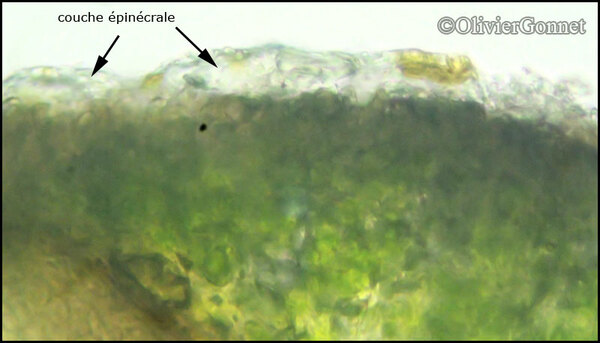
Courtesy Danièle et Olivier Gonnet - Source: https://www.afl-lichenologie.fr/Photos_AFL/Photos_AFL_P/Text_P_3/Placopyrenium_fuscellum.htm
France, session AFL 2015 dans le Lot

Bernard Bouffinier - Source: http://www.lichensmaritimes.org/index.php?task=lichens&lettre=P&lang=en
France, L'Aber
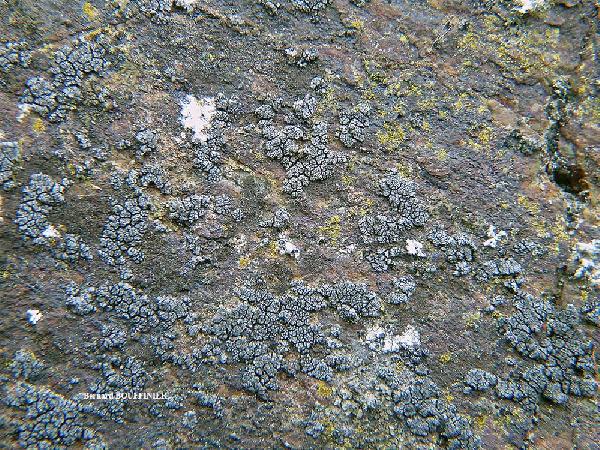
Bernard Bouffinier - Source: http://www.lichensmaritimes.org/index.php?task=lichens&lettre=P&lang=en
France, Sainte Anne la Palud
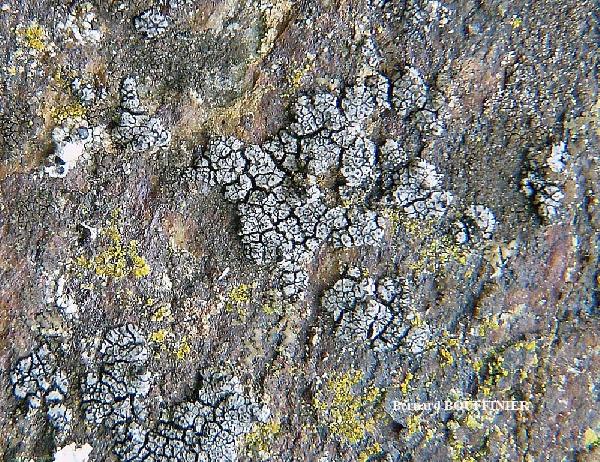
Bernard Bouffinier - Source: http://www.lichensmaritimes.org/index.php?task=lichens&lettre=P&lang=en
France, Sainte Anne la Palud
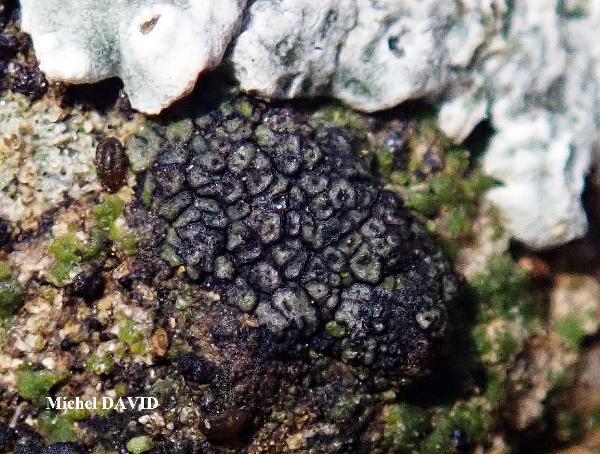
Michel David - Source: http://www.lichensmaritimes.org/index.php?task=lichens&lettre=P&lang=en
France, L'Aber

Michel David - Source: http://www.lichensmaritimes.org/index.php?task=lichens&lettre=P&lang=en
France, L'Aber
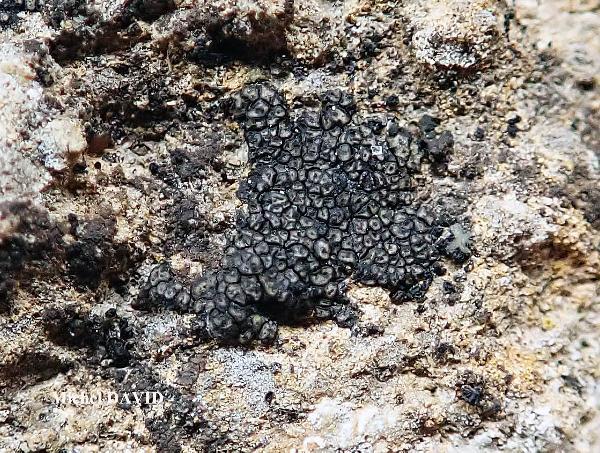
Michel David - Source: http://www.lichensmaritimes.org/index.php?task=lichens&lettre=P&lang=en
France, Croozn, L'Aber
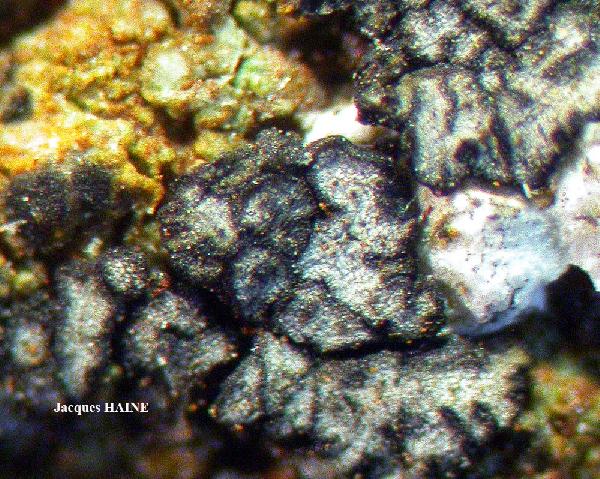
Jacques Haine - Source: http://www.lichensmaritimes.org/index.php?task=lichens&lettre=P&lang=en
France, L'Aber
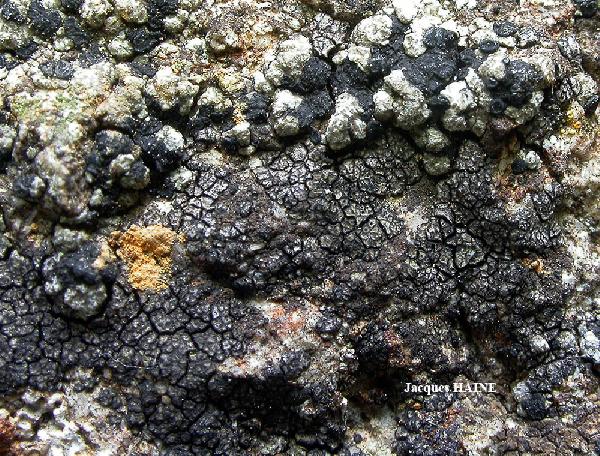
Jacques Haine - Source: http://www.lichensmaritimes.org/index.php?task=lichens&lettre=P&lang=en
France, L'Aber
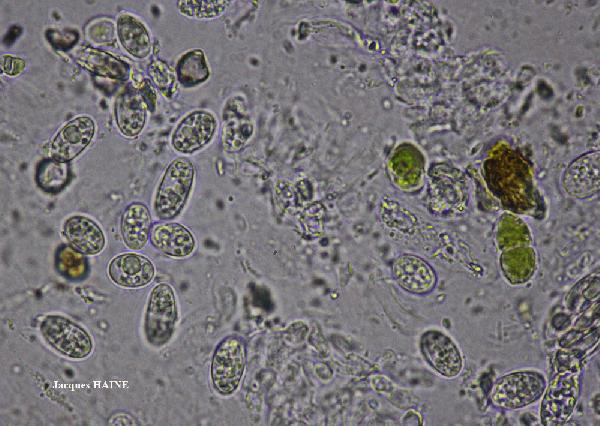
Jacques Haine - Source: http://www.lichensmaritimes.org/index.php?task=lichens&lettre=P&lang=en
France, L'Aber
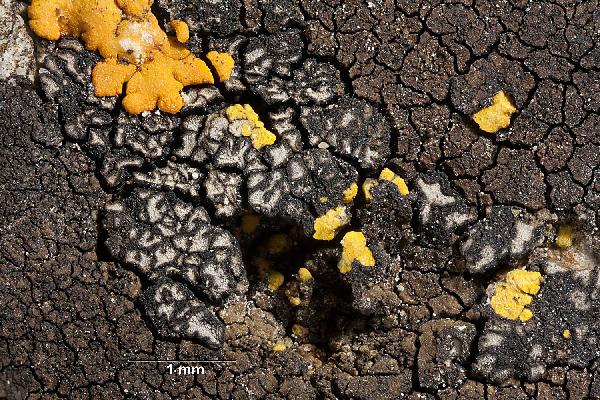
Ulrich Kirschbaum CC BY-SA 4.0 - Source: https://www.thm.de/lse/ulrich-kirschbaum/flechtenbilder
SE-Europe; N-Cyprus; SE of Girne; Beşparmak Mountains; Buffavento Castle (and surroundings)
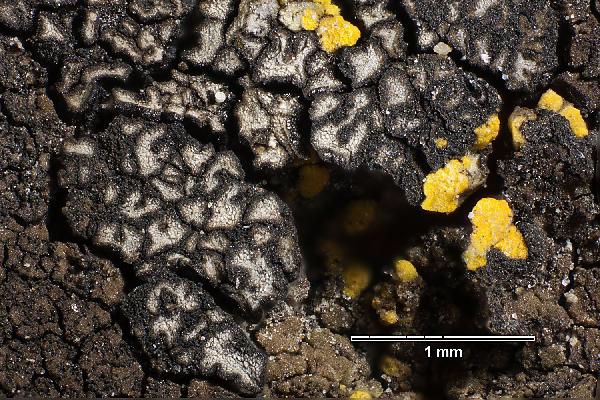
Ulrich Kirschbaum CC BY-SA 4.0 - Source: https://www.thm.de/lse/ulrich-kirschbaum/flechtenbilder
SE-Europe; N-Cyprus; SE of Girne; Beşparmak Mountains; Buffavento Castle (and surroundings)
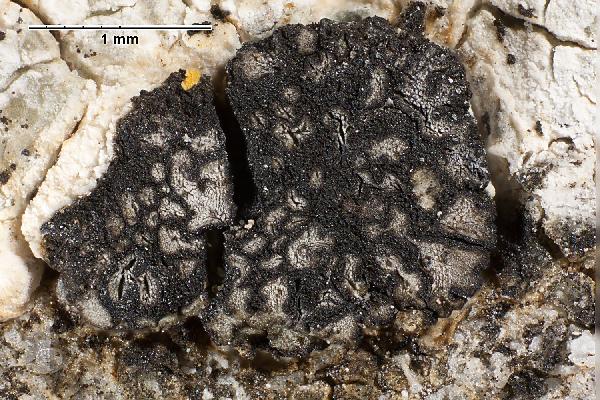
Ulrich Kirschbaum CC BY-SA 4.0 - Source: https://www.thm.de/lse/ulrich-kirschbaum/flechtenbilder
SE-Europe; N-Cyprus; SE of Girne; Beşparmak Mountains; Buffavento Castle (and surroundings)
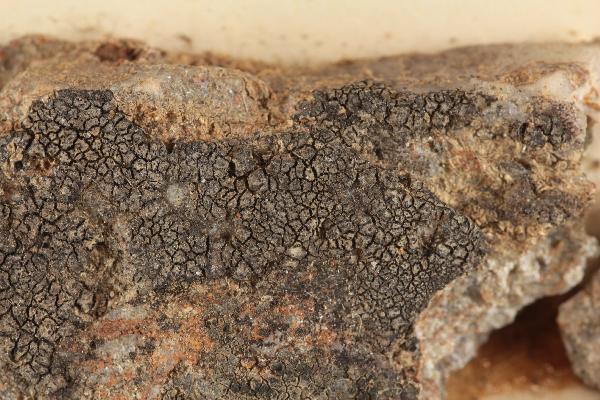
Collezione lichenologica Abramo Massalongo del Museo di Storia Naturale G. Ligabue di Venezia - Autori: Seggi, Linda; Trabucco, Raffaella Proprietà: Fondazione Musei Civici di Venezia - CC BY-NC
Italy, Veneto, in op. Recoaro 1855
as Lithoicea fuscella

Collezione lichenologica Abramo Massalongo del Museo di Storia Naturale G. Ligabue di Venezia - Autori: Seggi, Linda; Trabucco, Raffaella Proprietà: Fondazione Musei Civici di Venezia - CC BY-NC
Italy, Veneto, in M. Baldo
as Verrucaria glaucina
Growth form: Crustose
Substrata: rocks
Photobiont: green algae other than Trentepohlia
Reproductive strategy: mainly sexual
paras on Bagliettoa and Verrucaria when young
Poorly known taxon in need of further study
Commonnes-rarity: (info)
Alpine belt: rare
Subalpine belt: rather common
Oromediterranean belt: rather rare
Montane belt: common
Submediterranean belt: very common
Padanian area: very rare
Humid submediterranean belt: very common
Humid mediterranean belt: rather common
Dry mediterranean belt: rather rare

Predictive model
| Herbarium samples |

Courtesy Danièle et Olivier Gonnet - Source: https://www.afl-lichenologie.fr/Photos_AFL/Photos_AFL_P/Text_P_3/Placopyrenium_fuscellum.htm
France, session AFL 2015 dans le Lot

Courtesy Danièle et Olivier Gonnet - Source: https://www.afl-lichenologie.fr/Photos_AFL/Photos_AFL_P/Text_P_3/Placopyrenium_fuscellum.htm
France, session AFL 2015 dans le Lot

Courtesy Danièle et Olivier Gonnet - Source: https://www.afl-lichenologie.fr/Photos_AFL/Photos_AFL_P/Text_P_3/Placopyrenium_fuscellum.htm
France, session AFL 2015 dans le Lot

Bernard Bouffinier - Source: http://www.lichensmaritimes.org/index.php?task=lichens&lettre=P&lang=en
France, L'Aber

Bernard Bouffinier - Source: http://www.lichensmaritimes.org/index.php?task=lichens&lettre=P&lang=en
France, Sainte Anne la Palud

Bernard Bouffinier - Source: http://www.lichensmaritimes.org/index.php?task=lichens&lettre=P&lang=en
France, Sainte Anne la Palud

Michel David - Source: http://www.lichensmaritimes.org/index.php?task=lichens&lettre=P&lang=en
France, L'Aber

Michel David - Source: http://www.lichensmaritimes.org/index.php?task=lichens&lettre=P&lang=en
France, L'Aber

Michel David - Source: http://www.lichensmaritimes.org/index.php?task=lichens&lettre=P&lang=en
France, Croozn, L'Aber

Jacques Haine - Source: http://www.lichensmaritimes.org/index.php?task=lichens&lettre=P&lang=en
France, L'Aber

Jacques Haine - Source: http://www.lichensmaritimes.org/index.php?task=lichens&lettre=P&lang=en
France, L'Aber

Jacques Haine - Source: http://www.lichensmaritimes.org/index.php?task=lichens&lettre=P&lang=en
France, L'Aber

Ulrich Kirschbaum CC BY-SA 4.0 - Source: https://www.thm.de/lse/ulrich-kirschbaum/flechtenbilder
SE-Europe; N-Cyprus; SE of Girne; Beşparmak Mountains; Buffavento Castle (and surroundings)

Ulrich Kirschbaum CC BY-SA 4.0 - Source: https://www.thm.de/lse/ulrich-kirschbaum/flechtenbilder
SE-Europe; N-Cyprus; SE of Girne; Beşparmak Mountains; Buffavento Castle (and surroundings)

Ulrich Kirschbaum CC BY-SA 4.0 - Source: https://www.thm.de/lse/ulrich-kirschbaum/flechtenbilder
SE-Europe; N-Cyprus; SE of Girne; Beşparmak Mountains; Buffavento Castle (and surroundings)

Collezione lichenologica Abramo Massalongo del Museo di Storia Naturale G. Ligabue di Venezia - Autori: Seggi, Linda; Trabucco, Raffaella Proprietà: Fondazione Musei Civici di Venezia - CC BY-NC
Italy, Veneto, in op. Recoaro 1855
as Lithoicea fuscella

 INDEX FUNGORUM
INDEX FUNGORUM
 GBIF
GBIF
 DOLICHENS
DOLICHENS
